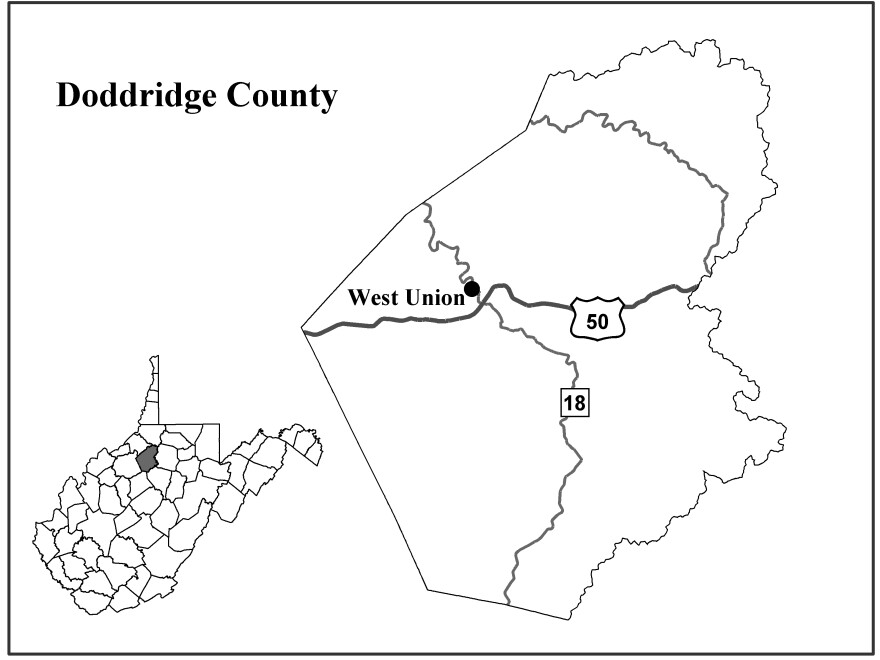For a couple of years now an organization that bubbled up in Doddridge County has been teaming with scientists to try to get a better handle on the impacts of horizontal drilling and the ancillary processes that support it. WV Host Farms brings together landowners, researchers, students, and news reporters to take a close look at what is locally referred to as “ground zero” of Marcellus Shale fracking.
Founder of the West Virginia Host Farms project, Diana Pitcock, spends a disproportionate amount of her time giving and organizing tours and facilitating research parties throughout Doddridge County and the various facilities associated with natural gas production there. She’s not an activist, or an environmentalist, she said. But she wants to help spread light on an industry that is tucked out of view from larger populations.
Central Station
One important stop, she said, is in the unincorporated town called Central Station where the Saturn Compressor Station (run by a company called EQT) is both operating, and under construction.
“This compressor, they are going to double that thing in size and there is nothing that requires them to enclose any of these emissions,” Pitcock said matter-of-factly.
She stopped along the way to speak with some residents in the community who are worried about air and noise pollution. But few are willing to be publicly vocal about concerns because they don’t want to openly criticize economic development in their rural backyards. Some members of the community get paid to do odd jobs for gas companies like monitor traffic to and from drilling sites, or help clean up spills.
Pitcock said communities like Central Station are a concern to members in her group WV Host Farms because they get some of the heaviest exposure to emissions and noise.
“We don’t have the protections we need for the people who live in these communities,” Pitcock said. “So this kind of noise goes on constantly and studies have shown that it will have health impacts.”
The Scene: Doddridge County has an estimated population of just over 8,000 people. Driving through Central Station, it looks to be home to a couple dozen families. There are several trailers spread across what looks like a floodplain, and several building in the heart of the community look very old and are covered in chipping paint. Throughout the area there are two things that stand out: there seem to be toys for young children in every yard, and there are “conventional” or vertical gas and oil wells around every turn.
WV Host Farms’ Diane Pitcock
WV Host Farms Program Administrator, Diane Pitcock, (M.S., C.A.G.S., Adult & Community Education, Johns Hopkins University) hails from the Baltimore area. She’s a self-described pro-small-business conservative. She says she and her husband moved to rural West Virginia several years ago to “watch chickens peck the yard,” and “disappear into a hollow.” But that life didn’t last very long.
“A couple years after we were here our neighbor leased his minerals and they put well pads on the surface near us and on the ridge above us,” Pitcock remembered. “And it gave me the idea that since the well pads are so close to our property the one thing we can do is invite people to get close and do these types of tests.”
So the West Virginia Host Farm project was born. As a result, various environmental groups, students, and researchers have gotten easy access to drilling sites and other natural gas processing facilities. The project facilitates groups studying everything from noise and light pollution to migratory song bird populations—and how they’re affected by the industrial outcroppings.
Air Quality Study
One research group WV Host Farms is facilitating is from Carnegie Mellon University. The study is of air quality in and around a variety of natural gas industrial sources. Researchers are driving a van all over north central West Virginia outfitted with air-probing sensors.
Post-doctoral fellow Mark Omara explained, it’s a mobile laboratory that detects and records methane and other gasses in real time. He’s studying air flow patterns coming off of hills that have a drilling pads and wells on top of them, and other industrial sources of emissions.
“In the Marcellus shale area, these emissions aren’t well-documented, and so we are curious to measure these emissions, quantify them,” Omara said.
The Carnegie study is funded by the National Energy Technology Laboratory. It began in May, this year, and will take another couple of years of testing and analyzing data before results are published sometime in 2016. Omara said there is one company which cooperated with the study so far, but WV Host Farms project has been extremely helpful in putting the research team in touch with landowners who provide valuable access to various sites.





















